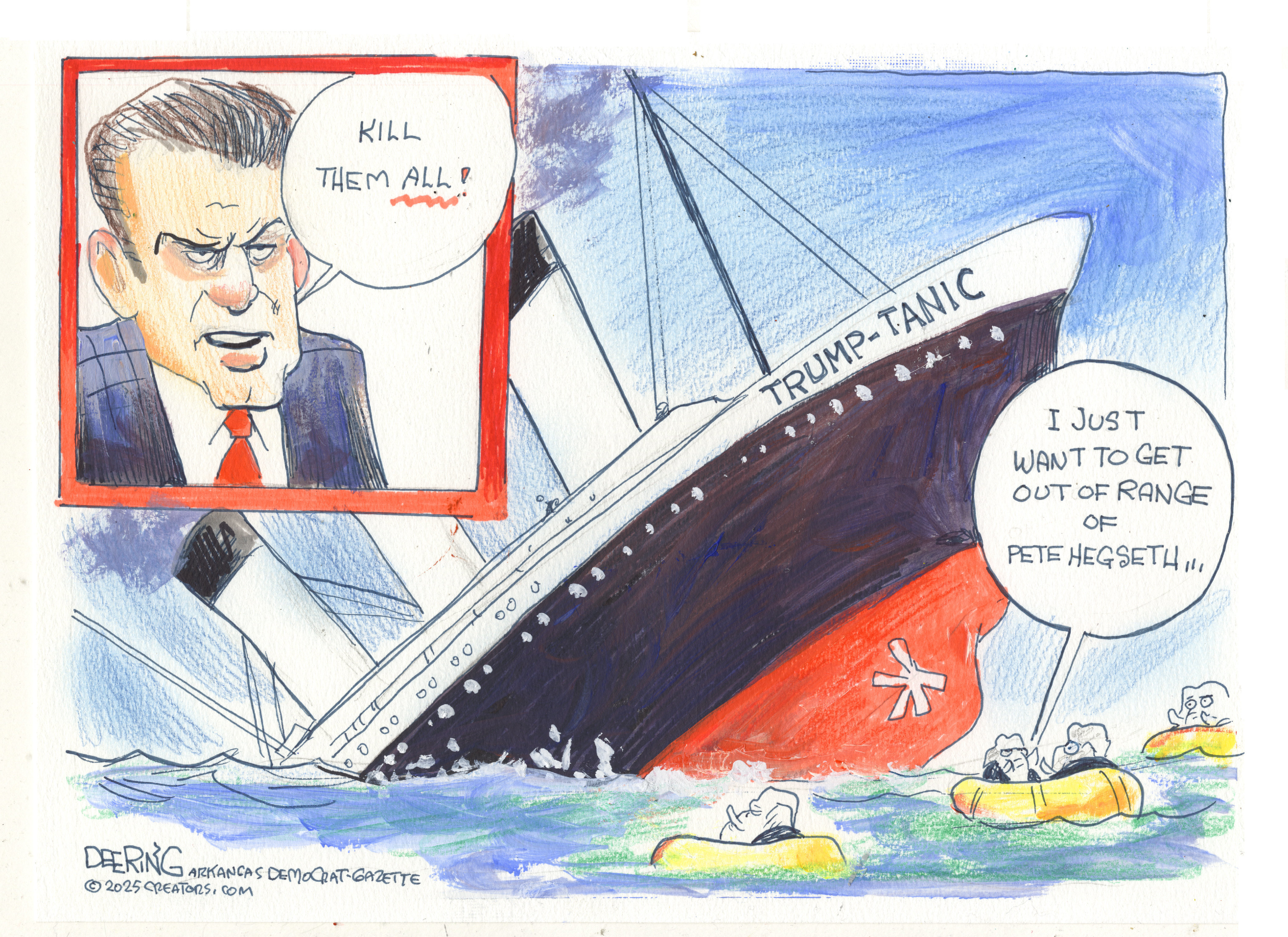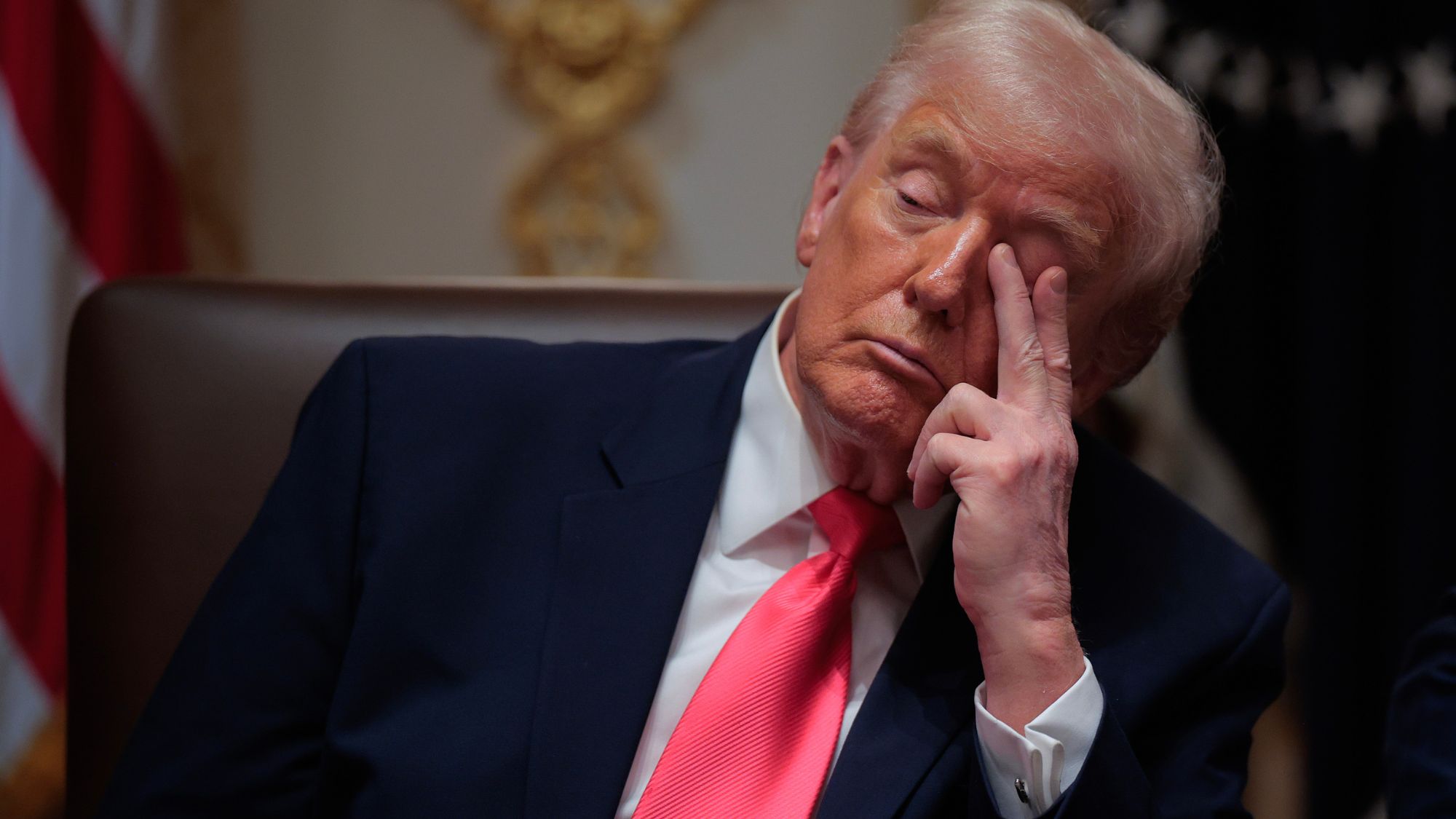Why do financial crises happen?
A review of Bob Swarup's Money Mania

The subject of Bob Swarup's Money Mania: Booms, Panics, and Busts from Ancient Rome to the Great Meltdown is precisely why I started writing about economics and finance.
I had learned about the Wall Street Crash of 1929 and the Great Depression in school, but it was never explained or even implied that these kinds of crises could ever happen again. The U.K.'s Chancellor of the Exchequer (and later, Prime Minister) Gordon Brown famously said in 1997 that the era of "boom and bust" was over.
The financial crisis that began in 2007, culminating in a financial market meltdown in the fall of 2008, smashed those assumptions. It demonstrated, too, in the most blatant way that policy-makers can be pretty clueless — look at former Fed Chair Ben Bernanke's 2005 comments that there was "no housing bubble".
The Week
Escape your echo chamber. Get the facts behind the news, plus analysis from multiple perspectives.

Sign up for The Week's Free Newsletters
From our morning news briefing to a weekly Good News Newsletter, get the best of The Week delivered directly to your inbox.
From our morning news briefing to a weekly Good News Newsletter, get the best of The Week delivered directly to your inbox.
I wanted to know what went wrong, how the bubble had grown so big, and why the financial system was so fragile. Above all, I wanted to know why financial crashes happened, and why so few economists and politicians saw the most recent crisis coming.
These are questions that Bob Swarup — an Indian-born cosmologist who has spent the last decade in the financial industry — attempts to answer in Money Mania.
Swarup's book is a swift tour of the last 2,500 years of history. He looks at the Roman credit crunch of 33 A.D., the Japanese financial crisis of the late 1980s, the Great Depression of the 1930s, the Greek financial crisis of 378 B.C, the Dutch Tulipmania in the early 17th century, and more.
Swarup theorizes that "[r]ises and falls are as natural to the economic condition as breathing is to the human condition." He notes:
A free daily email with the biggest news stories of the day – and the best features from TheWeek.com
"Every country has a crisis to share and every story is different. For every hypothesized commonality, there is an exception. They have occurred in different eras — ancient, medieval, and modern; under democracies, dictatorships, and monarchies; before we had central banks and after we had them; when the world clung to a gold standard and when it sought out paper money instead; in complex international systems and in small isolated communities; in eras of both laissez-faire capitalism and didactic state commerce; and in diverse asset classes from stocks to property to tulips to red mullets." [Money Mania]
Why do financial crises keep occurring? Swarup sees common behavioral threads at the core of all of these events. He says, "We humans are intendedly rational, but in practice what we term rationality is actually bounded on all sides by experience, emotion, and environment. These give us shortcuts that allow us to make quick decisions but also leave us with a host of unconscious behavioral biases."
In other words, reality is complex and difficult. Human beings resort to mental shortcuts — following the crowd, overconfidence, confirmation bias, framing, narrative fallacy, cognitive dissonance — to filter information and save time and effort. Swarup notes that much of the time these shortcuts are worth taking, saying these traits "are virtues that grow economies, pioneer advances, and take the human race forward," while "the excess of information confronting us on a daily basis needs to be carefully filtered if we are not to be overwhelmed and our decision making paralyzed."
However, our shortcuts sometimes lead us to risky ends, like buying into an economic bubble — whether it be technology stocks, tulip bulbs, or Japanese real estate — on gut instinct or the flawed advice of friends and media pundits. They can also lead politicians to make regulatory errors — getting rid of regulations that work, or creating new ones that create or exacerbate bubbles.
Swarup also argues that emotions cloud rational thinking: "We cannot separate thought from emotion. What we define as reason is colored not only by our state of mind at any given moment but also by our beliefs." I would emphasize this even more than Swarup does. The business cycle is very much an emotional cycle, one of excessive greed in the boom and excessive fear in the bust. Investors often simply make up rationalizations to justify their emotional state.
Swarup is adamant that "short of disowning progress and returning to small isolated communities, one cannot remove systemic crises. Even then, we cannot excise the ebb and flow of human emotion that arise from the biases within us".
Crises of complexity are the price we pay for a complex, modern economy. Unfortunately, Swarup does not mention the strongest argument to support this position. As the mid-20th century economist Hyman Minsky put it, stability itself is destabilizing. The lack of financial bubbles encourages financial bubbles.
The most famous example is The Great Moderation. The American economy experienced a period of relative stability from the end of stagflation in the early 1980s until the 2008 financial crash. But how do people react to a stable world? Very often, they become more tolerant of risky behavior.
During the Great Moderation, the financial industry began to make riskier loans at higher leverage ratios, even to individuals with no income and no job or assets (NINJAs). Lenders began hiding the risks by selling the future income from these loans as asset-backed securities.
Meanwhile, financial regulations like Glass-Steagall that separated publicly guaranteed depository banks from investment banks — and that may have been partially responsible for the relative financial stability between the Great Depression and the Great Recession — were repealed. Politicians were convinced by the financial industry, and equally by the long period of relative stability, that such curbs on risk-taking and financial innovation were no longer necessary.
The Great Moderation destabilized the system by making politicians and the financial world more risk-tolerant. Successful regulations became victims of their own success.
Swarup concludes that instead of trying to prevent booms and busts, we should create a financial system and society that can withstand them. He prescribes various measures to ease the cycle of booms and busts — debt restructuring for firms, individuals, and countries unable to pay their debts; countercyclical mechanisms, including lenders of last resort, to prevent debt deflation spirals; and maximum leverage ratios to prevent bubbles from growing excessively big.
He argues for restoring economic history as an academic discipline, so that policy-makers and financiers do not forget the crises of the past. He rails against GDP as a measure of economic growth, arguing that it does not differentiate between productive and unproductive activities. And he emphasizes the dangers of allowing economic inequalities to become too large, arguing that "crises accentuate inequality in the system, adding a social dimension that is far more destabilizing."
But perhaps the most valuable contribution of this worthy, (mostly) non-ideological survey of economic history is that it reminds us that the era of boom and bust is never over — it's just biding its time.
John Aziz is the economics and business correspondent at TheWeek.com. He is also an associate editor at Pieria.co.uk. Previously his work has appeared on Business Insider, Zero Hedge, and Noahpinion.
-
 In Suriname, the spectre of Dutch slave trade lingers
In Suriname, the spectre of Dutch slave trade lingersUnder the Radar Dutch royal family visit, the first to the South American former colony in nearly 50 years, spotlights role of the Netherlands in transatlantic trade
-
 Political cartoons for December 7
Political cartoons for December 7Cartoons Sunday’s political cartoons include the Trump-tanic, AI Santa, and the search for a moderate Republican
-
 Trump’s poll collapse: can he stop the slide?
Trump’s poll collapse: can he stop the slide?Talking Point President who promised to ease cost-of-living has found that US economic woes can’t be solved ‘via executive fiat’